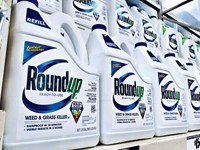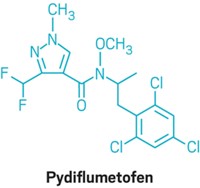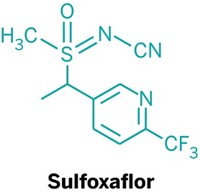Advertisement
Grab your lab coat. Let's get started
Welcome!
Welcome!
Create an account below to get 6 C&EN articles per month, receive newsletters and more - all free.
It seems this is your first time logging in online. Please enter the following information to continue.
As an ACS member you automatically get access to this site. All we need is few more details to create your reading experience.
Not you? Sign in with a different account.
Not you? Sign in with a different account.
ERROR 1
ERROR 1
ERROR 2
ERROR 2
ERROR 2
ERROR 2
ERROR 2
Password and Confirm password must match.
If you have an ACS member number, please enter it here so we can link this account to your membership. (optional)
ERROR 2
ACS values your privacy. By submitting your information, you are gaining access to C&EN and subscribing to our weekly newsletter. We use the information you provide to make your reading experience better, and we will never sell your data to third party members.
Environment
Origin Of Chlorfenapyr Insecticide
April 18, 2011
| A version of this story appeared in
Volume 89, Issue 16
William Schulz’s article on the escalating problem of bedbug infestation throughout the U.S. is interesting (C&EN, March 7, page 13). There is an error in the article that needs to be addressed, however. He includes a possible addition to the chemical arsenal to combat this problem: chlorfenapyr, marketed as Phantom, which is described in the article as having been “developed by BASF.” This is simply not the case.
Chlorfenapyr was the lead compound in the substituted pyrroles program conducted about 15 years ago by the Insecticide Group at American Cyanamid Agricultural Chemicals in Princeton, N.J. During this time, the Insecticides Group was headed by Roger Addor and then later by David Hunt.
Victor Kamhi synthesized the “parent” compound, the NH-unprotected pyrrole, while a colleague, Jody Furch, synthesized the ethoxymethylated derivative shown in the article. (The purpose of ethoxymethylation was to attenuate the toxicity profile). The research was toward combating agronomically important insects, particularly in the rice and cotton markets. American Cyanamid didn’t develop compounds internally for any home and garden uses.
About the time that chlorfenapyr (which was called Pirate at the time) was wending its way through the registration process, American Cyanamid was purchased by American Home Products (later to become Wyeth). As primarily a pharmaceutical company, AHP was lukewarm about the agricultural business and was unwilling to invest the time, effort, and money to progress Pirate further into the marketplace.
Shortly thereafter, AHP divested the entire agricultural division to BASF. This sale included the entire portfolio of marketed and experimental products, including Pirate. BASF also showed little interest in progressing Phantom in the cotton/rice markets, but investigated it as an agent against termites. More recently, BASF discovered the effectiveness of chlorfenapyr against bedbugs.
The bottom line is that BASF did not “develop” chlorfenapyr. The company inherited a compound originally discovered by the Insecticides Group of what was American Cyanamid Agricultural Products and have since uncovered a new “indication” (bedbug eradication) for which I hope they will be able to obtain registration in the near future.
Thank you for allowing us to set the historical record straight.
Victor Kamhi, Framingham, Mass.
Jody Furch, Lawrenceville, N.J.
David Hunt, Newton, Pa.





Join the conversation
Contact the reporter
Submit a Letter to the Editor for publication
Engage with us on Twitter